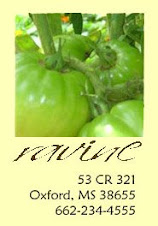
A chicken coup: Group seeks to protect rare breeds
By TRACIE CONE
By TRACIE CONE
FRESNO, Calif. (AP) — At about the time Foghorn Leghorn appeared on the Looney Toons drawing board in 1946, he began disappearing from America's dinner tables.
Now the bird on which the rooster cartoon character was modeled is among 66 types of old-fashioned chickens the American Livestock Breeds Conservancy is trying to save from extinction as factory-raised cross varieties command 90 percent of the market.
"When we can identify something in danger, we need to protect it," says Barbara Bowman of Sonoma County, an original board member of Slow Food USA who has a dozen of the last 510 Delaware breeding stock chickens in existence. "The old breeds provide really sturdy genetics that we have to guard."
Since the arrival of industrialized agriculture, more than 95 percent of vegetables that had been grown in the world have disappeared, according to the Center for Urban Education about Sustainable Agriculture.
America's purebred chickens began a similar decline after World War II, when poultry producers, seeking to hold onto the market gained during wartime beef shortages, participated in the national "Chicken of Tomorrow" contest. The goal: a broad-breasted variety that could be mass produced quickly on minimal feed. A Cornish-Plymouth Rock cross dominates today.
Now the North Carolina-based Conservancy hopes to do with chickens what seed banks have done for heirloom vegetables.
"All of the other breeds lost their jobs because they couldn't grow as fast," said Marjorie Bender, the Conservancy's technical program director. "The marketplace only cared about how fast it grew and how big it got."
Unlike chicken bought by the bucketful, certified heritage chickens like the Leghorn must breed naturally, be able to live and forage outdoors, meet certain breed standards and not be genetically modified to grow with abnormally large breasts. If a human baby grew as quickly as a five-week factory fryer, he would weigh 349 pounds by age 2, a University of Arkansas study found.
The group hopes that its "heritage" seal of approval will alert consumers that the chicken or eggs come from birds with unique flavors and characteristics, the way organic labels indicate an absence of pesticides.
"To save them, we have to eat them," says Bender. "We are losing genetic diversity in our country's livestock."
At least 19 heritage breeds, such as the white Delaware with the mottled neck, the white-egg laying Holland and black mottled Houdan, have been designated as critically threatened, which means there are fewer than 500 left. Dozens of others are in danger of disappearing without a market to sustain them.
Maintaining genetic diversity in the food supply is the goal. Members already have a record of protecting asses, turkeys and some threatened breeds of cattle and horses, such as South Carolina's sturdy Marsh Tacky.
"The factory chickens we have now are all closely related," Bender said. "If we had millions of chicken houses decimated (by disease), we'd have to figure out how to resist that disease. Part of the answer is genetically based."
The move to preserve old-fashioned breeds of chickens might not have the backyard appeal of the Brandywine tomato or the Kentucky Wonder bean. But to gourmets, the idea is growing.
On his 42-acre Azalea Springs Farm in Napa County, Douglas Hayes doesn't have a single grape vine but he does have 40 endangered Buckeyes that have free range to pick grubs amid his heirloom fruit trees and vegetables — and another 80 fertilized eggs on the way.
"Good quality, high-flavor food has always been a part of my life," Hayes said.

















No comments:
Post a Comment